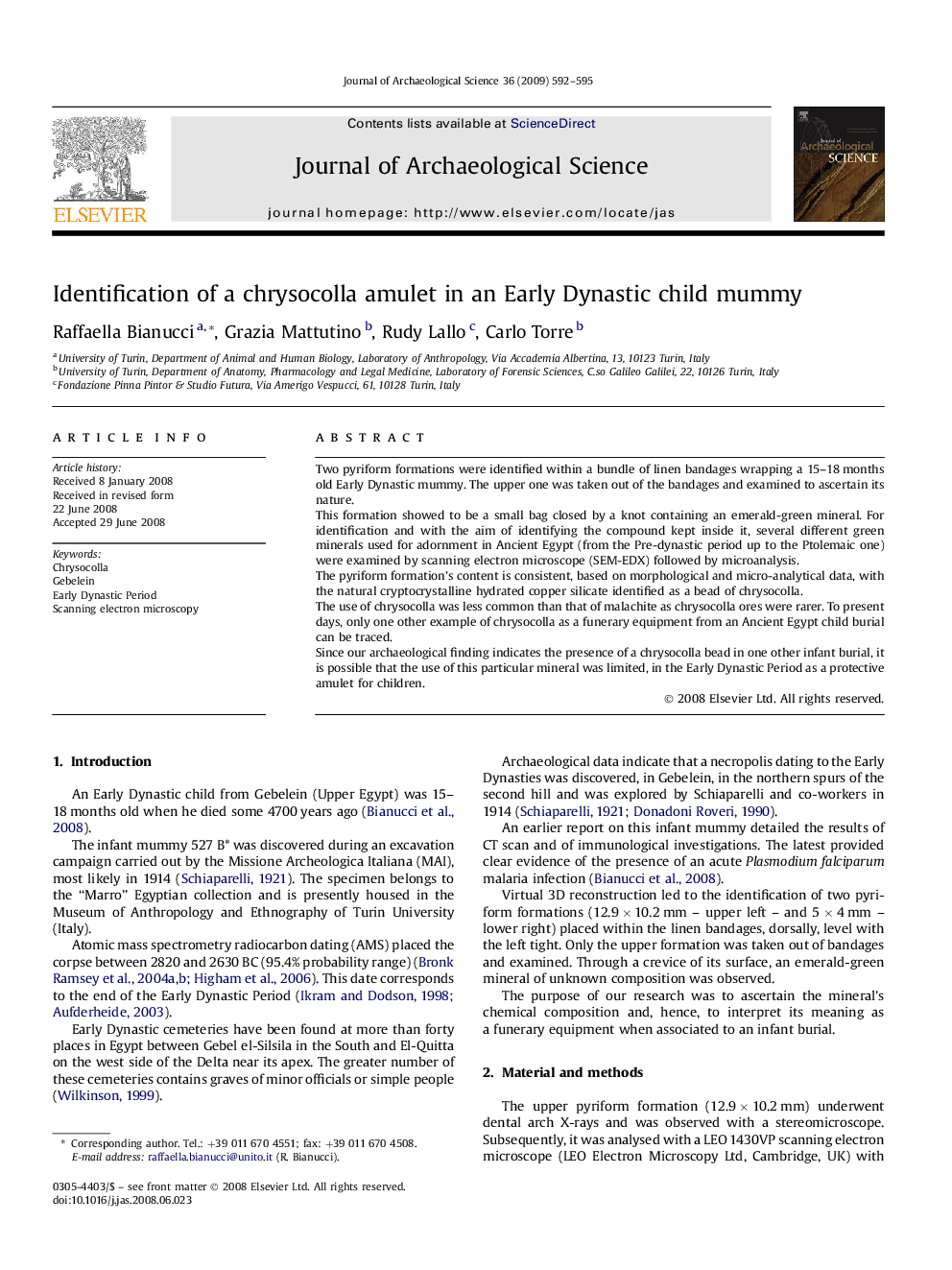| Article ID | Journal | Published Year | Pages | File Type |
|---|---|---|---|---|
| 1036798 | Journal of Archaeological Science | 2009 | 4 Pages |
Two pyriform formations were identified within a bundle of linen bandages wrapping a 15–18 months old Early Dynastic mummy. The upper one was taken out of the bandages and examined to ascertain its nature.This formation showed to be a small bag closed by a knot containing an emerald-green mineral. For identification and with the aim of identifying the compound kept inside it, several different green minerals used for adornment in Ancient Egypt (from the Pre-dynastic period up to the Ptolemaic one) were examined by scanning electron microscope (SEM-EDX) followed by microanalysis.The pyriform formation's content is consistent, based on morphological and micro-analytical data, with the natural cryptocrystalline hydrated copper silicate identified as a bead of chrysocolla.The use of chrysocolla was less common than that of malachite as chrysocolla ores were rarer. To present days, only one other example of chrysocolla as a funerary equipment from an Ancient Egypt child burial can be traced.Since our archaeological finding indicates the presence of a chrysocolla bead in one other infant burial, it is possible that the use of this particular mineral was limited, in the Early Dynastic Period as a protective amulet for children.
